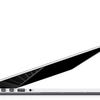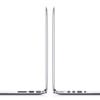Retina MacBook Pro review
Can Apple's laptop tech run extreme resolution 2880x1800 gaming? Digital Foundry investigates.
Described variously by Apple as the "best computer we've ever made" and indeed the "most beautiful", first impressions of the new Retina-equipped MacBook Pro are understated to say the least, with the machine taking the form of a stylistic merging of the existing model and the MacBook Air. It's big on build quality and premium finish, but rather unassuming on first glance once liberated from its minimalistic packaging... until you turn it on, that is; until you witness the new 2880x1800 display in action. Then it all begins to make sense.
The next generation MacBook Pro succeeds where - arguably - the Retina-equipped new iPad failed. It delivers ultra-precision resolution, but in a product geared more towards productivity and content creation, the extra pixels truly work for you. Not only that but it does so while reducing the form factor of the unit in comparison to its predecessor, being both thinner and lighter and at the same time considerably cooler too. New iPad was none of those things.
Perhaps most surprisingly of all, it makes the 15-inch laptop form factor relevant again. This is a product that is effectively a lightweight, highly portable mobile computer with enough power to replace just about any desktop computer. Hook this unit with more storage and a capture card via the Thunderbolt ports and it would actually outperform our current Nehalem-based in-house video capture/editing workstations.
Other laptops might match the Retina MacBook Pro on power, but at this form factor, none have the display - the sheer amount of real estate - required for more demanding content creation tasks. On this screen you can edit a full HD video with a 1:1 pixel ratio and still have real estate left over for the editing tools themselves. Mobile workstations used to require expansive 17-inch screens to truly work, but the new MacBook Pro simply works better and does so in a much more portable form.
It's not just the amount of pixels that makes the difference, it's the way they are utilised. The desktop is scaled to match the 1440x900 resolution of the last generation MacBook Pro, giving an easy route to compatibility with non-Retina applications and without making full-res programs look minuscule on the screen (compare and contrast with the default Windows set-up running on the same display). Non-native apps do look somewhat blurry though, and this extends to the browsing experience - web-based compressed images don't look so good right next to pristine-rendered text.
As expected, actual display quality is superb. Just like the new iPad, it's not just the pixel density that impresses so much - it's the stunning colour reproduction, very useful indeed for multimedia content creation tasks. It's easily the most beautiful laptop screen we've experienced, and it looks simply sensational for gaming too. But in this arena, the Retina MacBook Pro faces the exact same challenge as the new iPad. The GPU requirement for filling over 5.1m pixels per frame is enormous, and Apple needs to use existing off-the-shelf parts for the job, none of which were ever designed for such a task. To put it into perspective, top-end monitors tend to max out the bandwidth of a dual-link DVI connector with a 2560x1600 resolution: the next generation Macbook Pro's display has a 25 per cent boost in pixel count over that.
So while its multimedia and productivity credentials are beyond reproach, can the new MacBook Pro perform well as a games machine? Is it possible to enjoy extreme resolution gameplay with modern titles, or is it simply asking too much of the graphics architecture? Does this new display offer up any kind of glimpse of the future of gaming display hardware?
Beyond the display: gaming power in perspective
While Apple has exclusive bragging rights to the phenomenal display technology in the next generation MacBook Pro, it's worth pointing out that the core processing technologies within the unit are accessible to all manufacturers, and these parts can be found elsewhere at significantly lower prices - even from premium brand OEMs.
"The thin 15-inch form factor limits the heat dissipation capabilities of the unit, meaning that the next-gen MacBook Pro marries a high-end CPU with a mid-range graphics core. Can this GPU support Retina res gaming?"
The combination of the 2.6GHz Core i7 quad-core CPU and NVIDIA GT 650 graphics core isn't new to us - they're essentially exactly the same key parts we had in our Alienware M14x review unit, the only difference being that Apple has apparently upclocked the graphics core compared to the standard part. The make-up of the GT 650 itself is very similar indeed to the new GTX 650 desktop graphics card - a £90 offering with 384 CUDA cores.
For a machine as thin and light as the MacBook Pro, it's an excellent fit for the tightly enclosed environment it has to operate in and pretty much the best we could hope to expect for a machine with this form factor - but expectations need to be managed: this is a mid-range part surrounded by components that are the state of the art. If you're looking for a laptop gaming powerhouse, the same money can bring you significantly improved performance - look for a unit housing either the GTX 680M or the Radeon HD 7970M.
Clearly the Retina MacBook Pro is a unique offering in many ways, but in terms of price vs. graphical performance, this table of 3DMark11 benchmarks tells it how it is: there does appear to be a speed bump in effect but it's not game-changing stuff. And clearly the more expensive GTX 680M and Radeon HD 7970M offer a different league of GPU power - it's just a shame that this rules them out from inclusion into Apple's ultra-thin chassis.
Futuremark 3DMark 11: Tested on standard Performance and Extreme settings. Note that the M17x is running a slightly slower CPU - 2.3GHz vs. the 2.6GHz in the Retina Macbook Pro and Alienware M14x.
| Retina Macbook Pro/GT 650 | Alienware M14x/GT 650 | Alienware M17x/GTX 680M | Alienware M17x/HD 7970M | |
|---|---|---|---|---|
| 3DMark 11 Score | X797/P2535 | X740/P2334 | X2099/P6172 | X1808/P5780 |
| 3D Mark 11 Graphics | 707/2338 | 653/2101 | 1907/6067 | 1636/5556 |
It's safe to say that to get the most out of gaming with the Retina display, you'll need to turn to the mammoth PC games library, and that means loading up the Boot Camp Assistant in order to partition the SSD for a dual OS set-up. The new MacBook Pro doesn't have an in-built optical drive, so you're required to make an ISO image of your Windows disc, which BCA then unpacks onto a USB drive. Windows is installed, the Boot Camp drivers are added, and you're good to go. It is worth pointing out that there are a number of trade-offs when running the unit under Windows: principally, battery life takes a hammering - there's no NVIDIA Optimus implementation here, switching between integrated and discrete graphics as required, so the dedicated GPU is running full-time.
However, the Windows install does give us access to our PC games library and with it a chance to directly put the MacBook Pro up against our previously tested Alienware M14x, using the same graphics and processing tech. The results are quite interesting - as per the 3DMark11 scores, there's no revelatory increase from the apparently faster GPU, but the speed bump seems to make itself felt in certain areas. Here's how our Battlefield 3 test turns out, with the game running on medium settings at 1600x900.
"A 1600x900 Battlefield 3 test on medium settings confirms that ballpark gaming performance is only marginally superior to other laptops featuring the same core graphics technology."
However, compare and contrast that with our Skyrim intro test below. Here you can see that the extra speed offered by the Retina MacBook Pro doesn't translate into any kind of noticeable increase whatsoever - at this resolution at least; you're looking at just a couple of extra frames per second.
Clearly, the resolution's the thing when you're dealing with a display as beautiful as this one. Being closely acquainted with the core tech after our Alienware testing, it's safe to say that we did not hold out much hope for the machine in being able to run many modern games at the full 2880x1800 resolution. We're talking about a mammoth fill-rate requirement here from what we have established is a mid-range part. Our concern was that 384 CUDA cores wouldn't cut it in a world where even the 1344 cores in the GTX 680M can't sustain 1080p60 at max settings on Battlefield 3. However, as it happens, we came away pleasantly surprised.
With both OS X and Windows 7 installed, we could finally put the display tech through its paces with a fairly decent cross-section of titles. It's safe to say that full Retina support is still somewhat thin on the ground, but there are some interesting native resolution titles out there, with Blizzard leading the way. Diablo 3 is a bit of a disappointment though: the intricately detailed visuals are a perfect match for the display, but frame-rate is poor - operating around 20 frames per second, but varying considerably. We were pleasantly surprised with StarCraft 2, however. On default settings at Retina resolution, we played through several campaign missions and came away impressed; the game was perfectly playable and truly shined at full resolution. There did appear to be a little disparity in quality levels between terrain textures and the units, however.
"The cheaper Alienware M14x is a match for the next-gen Macbook Pro on Skyrim - but Apple's hardware surprised us by running this game at full 2880x1800 Retina resolution at medium quality settings at 30FPS."
Other titles we tested in the OS X arena were not so impressive however. Aspyr has patched many of its titles to support the 2880x1800 resolution, but games like Duke Nukem Forever and Call of Duty 4: Modern Warfare required substantial cutbacks on visual quality settings to get decent performance. Games like this also present further issues in that they were never designed to run at such a high resolution in the first place - the net result is that the sheer precision of the Retina display brutally highlights low polygon counts and poor quality textures, even with all the settings at their maximum level. Actually having to pare these back in order to make the games reasonably playable doesn't do the games any favours making them interesting, but disappointing demos for the machine.
One interesting element to note is that these low-poly titles still reveal noticeable jaggies in high contrast areas, so some form of anti-aliasing is still required, even on a display designed so that individual pixels cannot be discerned by the human eye. However, further testing on new titles threw up an interesting observation: cheaper post-process AA in combination with the extreme pixel count appears to be up to the task of eliminating aliasing in a very pleasing manner, with the sub-pixel artifacting associated with the technique very difficult to pick up on.
"The detail-rich Diablo 3 and StarCraft 2 look simply stunning on the new display, though frame-rates are an issue on the former, meaning compromises on resolution are inevitable."
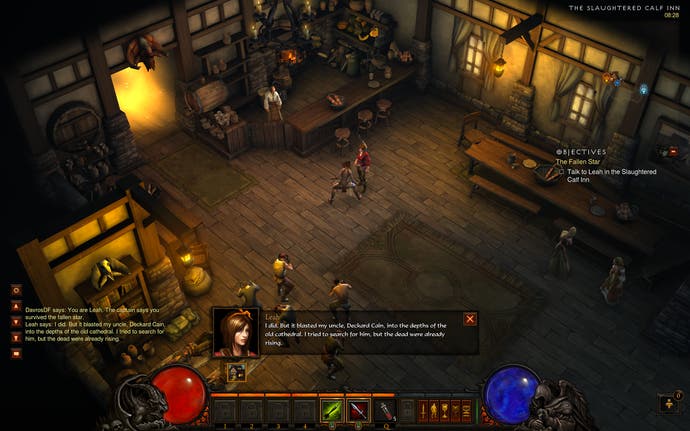
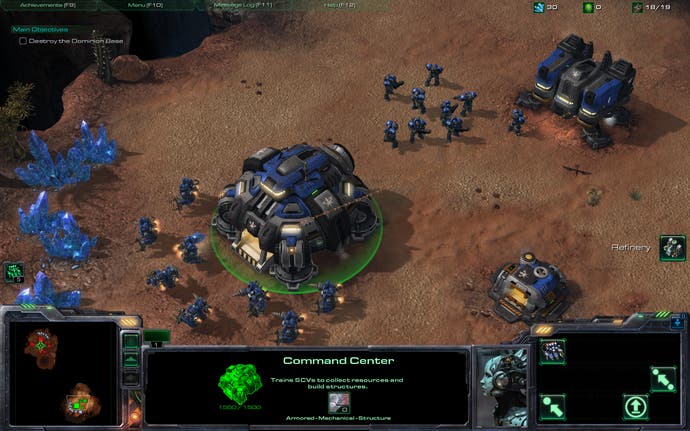
Moving onto our Windows test subjects, we met with rather more success. With Batman: Arkham City, we dropped down quality settings to DX9 medium, invoked a touch of FXAA (we used the low quality setting) and found that the game is eminently playable at full Retina resolution with frame-rates hovering around the 30FPS area. This quality setting retains dynamic shadows while turning off most of the other graphical bling, but the generally high detail level in the core artwork shines through at the Retina level. Gradually turning on the settings doesn't seem to impact overall frame-rate that much, but appearances are deceptive: continue gameplay and consistency in the experience takes a massive hit - sudden lurches down to 8FPS definitely aren't helpful and overall we found the global medium preset to be the best bet.
Skyrim also proved pleasantly surprising. We tweaked the medium quality setting to remove multi-sample anti-aliasing, utilising FXAA instead, and upped anisotropic filtering up to 4x. This allows you to enjoy full Retina resolution with a 30FPS update: better than console performance and with far superior visuals.
The real issue to consider about Retina gaming is whether the trade-offs in frame-rate and quality settings warrant the undoubted benefits of the 2880x1800 display. In this series of comparison shots, we take our medium setting Retina games and compare them to the same title running at 1680x1050 with quality bumps. We've left the FRAPS counter active on the top-left too to give you some general idea of performance.
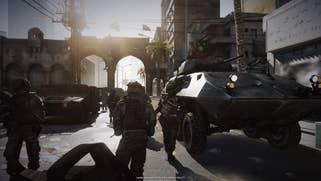

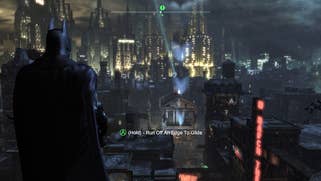
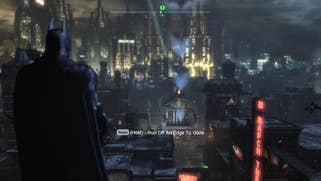
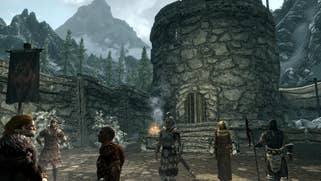
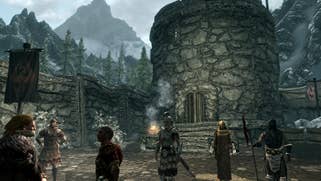
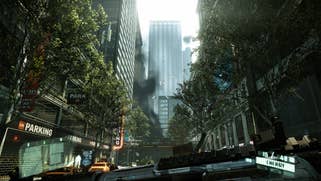
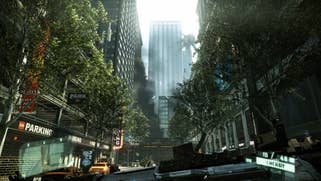


We also tested Ubisoft's Rayman Origins. The game is based on beautifully rendered 2D artwork with some lovely animation, meaning that it's one of the few games to run at 1080p60 on both Xbox 360 and PlayStation 3. Bearing in mind the leap in processing power the Retina Macbook Pro represents, it's no surprise that we were able to run the same game locked to 60FPS at the full 2880x1800 pixel count. We aren't pushing the state-of-the-art here in terms of game technology, but on the Retina display, the game looked simply phenomenal.
While we got more performance at the Retina level than we expected, there were some unmitigated disasters too. We gave Battlefield 3 and Crysis 2 a run-out, both running at the absolute lowest quality settings we could muster. While Crytek's epic showed some signs of being able to reach 30FPS in isolated areas, the experience was a sub-20FPS disaster for the most part, and BF3 proved equally non-cooperative. The Retina display also did a great job in highlighting the visual compromises DICE has made on its poverty-spec settings, and dialling back resolution in favour of higher quality is obviously the way to go in playing this game the way the developers intended.
And that's not necessarily a bad thing. While the ultra-high resolution of the screen is obviously a major selling point of the new hardware, it's worth pointing out that the screen has many positive points over and above its pixel-count. Colour reproduction and viewing angles are simply stunning - and that remains the case if you're operating at native resolution or below. Also, the machine appears to scale imagery remarkably well. Initially we thought that running at quarter resolution - 1440x900 - with 4x multi-sampling enabled may be the best way to use the Retina MacBook Pro for gaming. It's certainly a viable option, but we also found that the scaler was more versatile than we imagined, and to our eyes 1680x1050 with FXAA was the sweet spot for performance, visual options and overall image quality.
Retina MacBook Pro: The Digital Foundry Verdict
"Geared more towards productivity than gaming, the Retina MacBook Pro is a stunning piece of engineering and in terms of gaming prowess, it managed to exceed our expectations."
So is this truly the best computer Apple has ever made? We think so, and as an all-round performer, it's probably the best laptop on the market right now - as you would hope for what is an extremely expensive piece of kit. While we feel that the 13.3-inch form factor remains best for overall portability, Apple's new 15-inch offering has its own charms, feeling remarkably light and easy to handle while the combination of the larger screen, stunning resolution and state-of-the-art colour reproduction make it brilliant for productivity tasks such as photo- or video-editing. In terms of the core interfaces between man and machine - keyboard, trackpad and display - this is the best experience we've had with any laptop we've tested. It's a phenomenal achievement and it's the first and only machine we've tested that could potentially work as a mobile replacement for our in-house workstations.
However, when it comes to gameplay, there is a slight sense of imbalance to the machine: the quad-core i7 in this unit offers something close to premium desktop performance but due to the thermal limitations of the thin unibody chassis, the graphics core is a mid-range component offering exactly the kind of power you'd expect: decent enough, but a little lacking for a machine this expensive.
The choice of GPU pitches the Retina MacBook Pro very much as a device geared to home computing and productivity tasks, rather than a state-of-the-art games machine. However, as long as you're realistic about quality settings, you can play any game on this machine, but you'll be relying on lower resolutions and upscaling to achieve playable frame-rates. That said, the fact that we can play games like Skyrim, StarCraft 2 and Batman: Arkham City at the extreme resolutions this laptop offers is a very pleasant surprise - and there are times when the whole package comes together with a sense that you truly are getting a taste of the future of gaming on cutting-edge display technology.
The only real disappointments we have with the new Retina MacBook come from the complete lack of upgradability. Proprietary screws stop you from getting inside the machine, but once you do get inside you quickly discover that the RAM modules are soldered into the mainboard and the SSD form factor is unique not just to Apple, but to this particular model. This means you need to get your parts choice right at the purchasing stage, where upgrades cost a small fortune. A 512GB SSD upgrade from the default 256GB on the entry-level model costs an astonishing £400, and even the ultra-pricey £2,300 model only comes with 8GB of RAM - doubling that is another £160. That's incredibly expensive, but if you're buying this with content creation in mind, it's the one upgrade you probably shouldn't skimp on.
Overall then, the next generation MacBook Pro with Retina display is a stunning piece of technology and the best all-round performer we've tested - and while it's fine for gaming, at this price there are much stronger products out there. At this price-point, its appeal will be limited - specifically to those who require desktop power and productivity on the move - but going forward, the future of Apple's laptop line-up looks bright. The combination of a 13.3-inch Retina display and next year's Intel "Haswell" CPU architecture - which should offer GPU power close to the GT 650 found in this new MacBook Pro - could be a stunning games machine...



